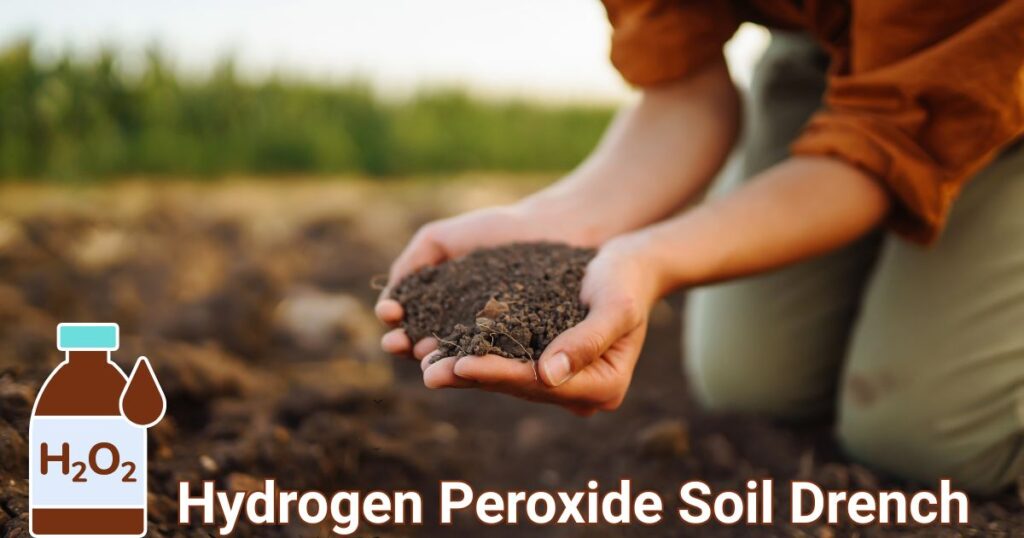Tiny black flies hovering around your beloved houseplants? Don’t panic! These fungus gnats may be annoying, but with the right approach, you can banish them for good. Let’s explore proven solutions every plant parent needs to know.
If you’ve noticed tiny black flies buzzing around your houseplants, you’re dealing with fungus gnats. While these pesky insects are more annoying than harmful, no plant lover wants to share their indoor garden with these unwelcome guests. As a plant enthusiast who has battled these tiny invaders multiple times, I’m sharing everything I’ve learned about eliminating gnats from your plants once and for all.
What Are Fungus Gnats?

Before diving into solutions, it helps to understand what you’re dealing with. Fungus gnats are small, mosquito-like flies about 1/8 inch long with slender legs and transparent wings. Unlike fruit flies (which are attracted to ripening produce), fungus gnats are specifically drawn to the moist soil of your houseplants.
The adult gnats you see flying around are actually just the visible part of the problem. The real damage happens below the soil surface, where fungus gnat larvae feed on organic matter, fungus, and sometimes young plant roots. While adult gnats only live for about a week, they can lay up to 300 eggs in that time, leading to a quickly multiplying infestation if not addressed.
The Fungus Gnat Life Cycle
Understanding the gnat life cycle helps explain why these pests can be so persistent:
- Eggs: Female gnats lay tiny eggs in moist soil
- Larvae: After hatching, larvae feed in the soil for 1-2 weeks
- Pupae: Larvae pupate in the soil for about a week
- Adults: Emerging adults live for about 7-10 days, mating and laying new eggs
This quick reproduction cycle means you need to break it at multiple points for effective control.
Why Your Plants Have Gnats: Common Causes
Fungus gnats don’t appear randomly—they’re attracted to specific conditions in your plant environment:
1. Overwatering
The number one cause of fungus gnat problems is excessive moisture. When soil stays wet for too long, it creates the perfect breeding ground for fungus that gnat larvae feed on. Overwatering doesn’t just attract gnats—it can also lead to root rot and other plant health issues.
2. Organic Matter in Soil
Commercial potting mixes rich in organic materials like peat moss, compost, or bark can attract fungus gnats. While these components are excellent for plant health, they also provide food for gnat larvae.
3. New Plants or Soil
Often, gnats enter our homes through newly purchased plants or bags of potting soil. Even high-quality sources can harbor eggs or larvae that are invisible to the naked eye.
4. Warm Indoor Temperatures
The warm, protected environment of your home provides ideal conditions for gnats to complete their life cycle year-round, unlike outdoors where winter temperatures would naturally control their population.
Effective Strategies to Eliminate Gnats from Your Plants
Now that you understand the problem, let’s tackle the solutions. For best results, you’ll want to use multiple approaches simultaneously to interrupt the gnat life cycle at different stages.
Immediate Actions for Quick Relief
1. Let Your Soil Dry Out
Since moisture is what attracts gnats in the first place, allowing the top 1-2 inches of soil to dry out completely between waterings is your first defense. Most houseplants actually prefer this watering schedule anyway. Resist the urge to water lightly every day—instead, water thoroughly but less frequently.
2. Remove Standing Water
Check your plant saucers and decorative pots for any standing water and empty it immediately. Even small amounts of water can become breeding sites.
3. Use Yellow Sticky Traps
These inexpensive traps capture adult gnats before they can lay more eggs. Place several traps near affected plants at soil level and just above the plants where gnats tend to fly. While sticky traps won’t solve the problem alone, they help reduce the adult population and serve as a monitoring tool to gauge your progress.
4. Remove Debris from Soil Surface
Clear away any fallen leaves, plant debris, or visible mold from the soil surface. This reduces hiding places and food sources for larvae.
Long-Term Solutions for Complete Elimination
1. Hydrogen Peroxide Soil Drench

A hydrogen peroxide solution kills gnat larvae on contact without harming your plants:
- Mix 1 part 3% hydrogen peroxide with 4 parts water
- Allow the soil to dry out partially before application
- Water your plants thoroughly with this solution
- The solution will bubble slightly as it kills larvae and their food source
The hydrogen peroxide breaks down into water and oxygen, benefiting plant roots while eliminating larvae.
2. Beneficial Nematodes
These microscopic organisms are natural predators of fungus gnat larvae:
- Purchase beneficial nematodes (Steinernema feltiae) from garden centers or online
- Mix with water according to package directions
- Water into the soil of affected plants
- Reapply as directed (usually every 2-4 weeks)
Nematodes actively hunt and kill larvae in the soil but are completely harmless to plants, humans, and pets.
3. Diatomaceous Earth Application
This natural powder made from fossilized algae has microscopic sharp edges that cut through insects’ exoskeletons:
- Allow soil to dry out partially
- Dust a thin layer of food-grade diatomaceous earth on the soil surface
- Avoid breathing the dust during application
- Reapply after watering or if the layer gets disturbed
Diatomaceous earth loses effectiveness when wet, so timing is important.
4. Mosquito Bits or Mosquito Dunks
These products contain Bacillus thuringiensis israelensis (BTI), a beneficial bacteria that targets fungus gnat larvae:
- Crush mosquito bits or break off pieces of dunks
- Sprinkle on soil surface or mix into water
- Water plants with this solution
- Reapply every 2-3 weeks
BTI is specific to certain insect larvae and won’t harm beneficial organisms, plants, people, or pets.
5. Bottom Watering Method

Changing how you water can significantly reduce gnat problems:
- Place your plant pot in a container of water
- Allow water to soak up through drainage holes for 10-30 minutes
- Remove pot once soil is moist
- Let excess water drain completely
This keeps the top layer of soil—where gnats lay eggs—drier while still hydrating your plants.
Advanced Techniques for Stubborn Infestations
1. Repotting with Fresh Soil
For severe infestations, sometimes starting fresh is best:
- Prepare new, sterile potting mix
- Gently remove plant from infested soil
- Rinse roots carefully to remove larvae
- Dispose of old soil in sealed bag (don’t compost it!)
- Repot in fresh soil
- Apply preventive treatments to new soil
Add a thin layer of sand or aquarium gravel on top of your new soil to create an inhospitable environment for egg-laying gnats.
2. Soil Drenches with Neem Oil
Neem oil is a natural insecticide that disrupts the gnat life cycle:
- Mix 2 teaspoons of neem oil with 1 teaspoon mild liquid soap in 1 quart of water
- Shake well and apply as a soil drench
- Reapply every 7-10 days
- Be patient—neem works slowly but effectively
While safe for most plants, test on a small area first, as some sensitive plants may react to neem oil.
3. Beneficial Insects
Introduce natural predators like:
- Hypoaspis miles soil mites that consume gnat larvae
- Rove beetles that feed on various soil pests
- Beneficial nematodes as mentioned earlier
These can be purchased from specialized garden suppliers and provide ongoing control.
Prevention: Keeping Gnats Away for Good
Once you’ve eliminated your gnat problem, use these practices to prevent future infestations:
1. Smart Watering Practices
- Water only when the top 1-2 inches of soil is dry
- Use the “finger test”—insert your finger into the soil to check moisture below the surface
- Consider moisture meters for more accurate readings
- Adjust watering seasonally (plants need less water in winter)
2. Quarantine New Plants
Always isolate new plants for at least two weeks before introducing them to your collection. This allows you to monitor for pests and treat them before they spread.
3. Sterilize Potting Soil
If you suspect your potting soil may contain gnat eggs or larvae:
- Spread soil on a baking sheet
- Bake at 180°F for 30 minutes
- Allow to cool completely before use
Alternatively, you can freeze soil for 48 hours to kill eggs and larvae.
4. Use Bottom Drainage
Ensure all planters have adequate drainage holes and never let plants sit in standing water.
5. Consider Soil Amendments
Adding these to your potting mix can discourage gnats:
- Coarse sand or perlite improves drainage
- Activated charcoal inhibits fungal growth
- Cinnamon acts as a natural fungicide
Natural Deterrents for Ongoing Protection
Several natural substances can help keep gnats away without harsh chemicals:
1. Cinnamon Powder
Sprinkle a layer of ground cinnamon on the soil surface. It has antifungal properties that reduce the food source for larvae.
2. Chamomile Tea
Water plants occasionally with cooled chamomile tea, which contains compounds that inhibit fungal growth and damping-off disease.
3. Apple Cider Vinegar Traps
Create traps for adult gnats:
- Fill a small container with apple cider vinegar
- Add a drop of dish soap to break surface tension
- Cover with plastic wrap and poke small holes
- Place near affected plants
4. Carnivorous Plants
Add natural gnat predators to your collection! Plants like sundews (Drosera) and butterworts (Pinguicula) actually capture and digest adult fungus gnats.
FAQ’s:
1. What causes gnats in houseplants?
Gnats are usually caused by overwatering, organic matter in soil, or bringing in new infested plants. Moist soil provides the perfect breeding ground for fungus gnats.
2. How do I get rid of gnats in my plants naturally?
You can use natural methods like letting the soil dry out, adding cinnamon, using apple cider vinegar traps, or applying a hydrogen peroxide soil drench.
3. Does hydrogen peroxide kill fungus gnat larvae?
Yes, a 1:4 solution of 3% hydrogen peroxide and water kills gnat larvae on contact and is safe for most houseplants when used properly.
4. Are fungus gnats harmful to plants?
Adult fungus gnats are mostly a nuisance, but their larvae can damage plant roots, stunt growth, and increase susceptibility to root rot.
5. Can I use sticky traps to eliminate gnats?
Sticky traps are effective for catching adult gnats but work best when combined with soil treatments to eliminate larvae and stop the breeding cycle.
Final Thoughts: Patience and Persistence
Remember that completely eliminating gnats requires breaking their life cycle, which takes time. Don’t expect overnight results—most treatment plans require 2-3 weeks of consistent application before you’ll see a significant reduction in the gnat population.
By combining several methods and addressing the root causes—primarily overwatering and organic matter—you’ll be able to enjoy your indoor garden without the annoyance of fungus gnats. Your plants will thank you too, as the conditions that discourage gnats generally promote healthier plant growth overall.
With these strategies in your plant care toolkit, you’ll be well-equipped to handle any future gnat invasions quickly and effectively. Happy growing up!


